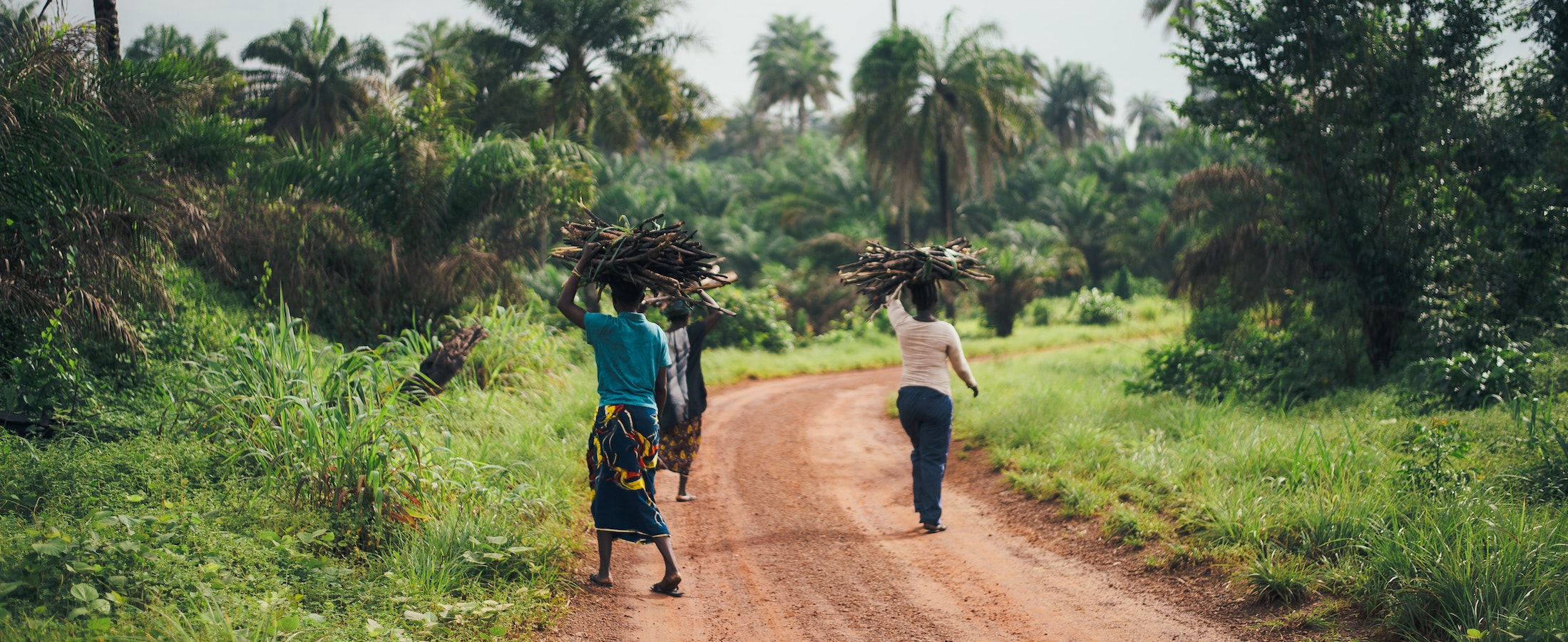The bitter side of chocolate
The cocoa sector faces a number of challenges. A large proportion of cocoa farmers are affected by poverty, and child labor remains a prevailing issue, particularly in West Africa. In addition, cocoa is often produced at the expense of the environment.
Poverty and inadequate living conditions
Most cocoa farming families live in poverty, with cocoa production accounting for about two-thirds of their income. In West Africa, self-employed cocoa farmers work on small plots of land with less than five hectares and an average yield of only 400 kilograms per hectare. This is in contrast to fluctuating prices and a lack of access to financial services. The low incomes are often not sufficient for a living income, and living and working conditions are often inadequate. Learn more
Child labor in cocoa
Child labor is a widespread phenomenon on many West African cocoa farms. Most cocoa farming families cannot afford to hire external labour, and cocoa farming requires seasonal labour. Thus, in times of labour shortage, cocoa farming households often rely on children and young people. It is estimated that in Côte d'Ivoire and Ghana, the world's two largest cocoa producing countries, around 1.6 million children work on their families' cocoa farms. This corresponds to about 45 % of the children living in agricultural households in cocoa-growing regions. Work done by children in cocoa production often involves hazardous tasks such as spraying pesticides, carrying heavy loads, climbing cocoa trees for harvesting, or opening cocoa pods with sharp tools like machetes. With limited school attendance, development and education are hindered. This can entrench the household’s impoverishment for subsequent generations, making it harder to break the cycle of poverty. Learn more
Deforestation and loss of biodiversity
In many countries, cocoa production is threatened by aging plantations, poor farm management, soil degradation, pests and other diseases. To increase production and meet demand, cocoa producers often rely on the clearing of additional forest land. Deforestation leads to a loss of biodiversity and contributes to climate change. In addition, the misuse or overuse of pesticides and chemical fertilizers in many cocoa farms negatively affects the quality of local water resources, contaminates soils, and further reduces biodiversity. Learn more
The threat of climate change
Cocoa production is increasingly threatened by climate change. As extreme weather events become more frequent, they render some regions less suitable for cocoa growing. Prolonged dry seasons, less rainfall, extreme temperatures, and the appearance of new pests and diseases can reduce both cocoa yields and quality. These shifts translate into reduced income and an unpredictability in the cocoa market that most farmers are not prepared for. Adapting to climate change to strengthen the resilience of livelihoods and farming systems is thus becoming an increasingly pressing issue for all actors in the cocoa sector.
Lack of access to finance and inadequate infrastructure
Low financial literacy and lack of access to financial services make it difficult for farmers to find a way out of poverty. Without access to savings systems, loans or micro-credits, they have no means to buy high-quality cocoa plants and input supplies to re-invest in their farms. The lack of financial resources impedes training and thus lowers the chance to improve agricultural practices. Moreover, inadequate road infrastructure makes the transport of the harvest more expensive and makes farmers more dependent on intermediary trade, which reduces their revenues. In addition, the provision of safe drinking water and sanitation is limited in many cocoa producing communities.

